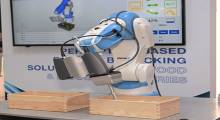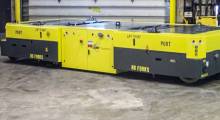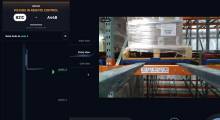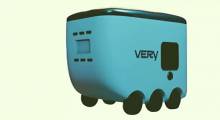With mixed stock keeping unit (SKU) order picking and palletizing only getting more complicated, interest in—and application of—robotic palletizing is on the rise. That’s because robotic palletizers flexibly address complexity, particularly when building mixed pallets to customer- or store-specific reverse sequencing requirements.
“Whether the pallets need to be built so that each layer represents a different stop on a delivery route or to match store aisles, robotic palletizing systems are flexible, fast and accurate,” says Brian Keiger, general industry sales manager for Grenzebach Corp. “Further, robotic palletizers easily adapt and expand to match changing consumer demands.”
Building custom, mixed pallet loads requires a delicate balance between a customer’s depalletizing needs and the stacking force limitations of each case. Previous options include building the load by hand, using a traditional system limited to handling one or two cases at a time, or employing multiple robotic units.
Advances in the robotic palletizing technology can now enable a single robot to deftly build the pallet load. That’s because some of the newest, most advanced grippers used to stack the cases handle up to six different case sizes as a single layer, simultaneously.
“Picture a city skyscraper; that’s the variety of plane fields in a layer profile this gripper can handle,” he says. “Each ‘finger’ of these advanced grippers functions independently in multiple axes to adjust each case to fit the profile of each mixed case layer.”
The advanced gripper works in tandem with palletizing software that builds the pallet load ahead of time. The software knows what SKUs are required, in what order they will be unpalletized, and their individual characteristics (weight, height and stacking rules).
Not only do these increased system capabilities save space and reduce costs, they also eliminate labor.
“Particularly with an aging workforce, it’s too physically demanding for warehouse workers to manually build a pallet,” Keiger says. On the other hand, younger employees who have grown up around computers and technology are very comfortable working with automation. That also makes the systems more attractive to prospective buyers, he adds.
About the Author
Follow Robotics 24/7 on Linkedin
About the Author
Follow Robotics 24/7 on Linkedin
Article topics
Email Sign Up















